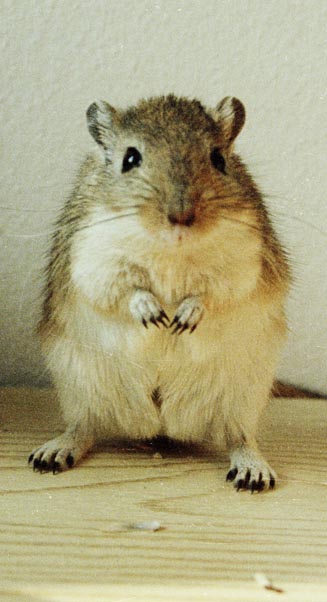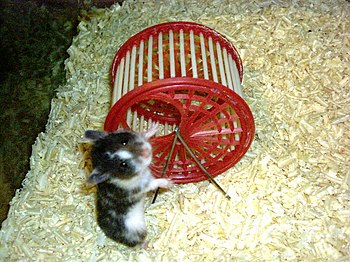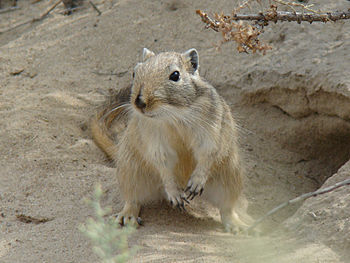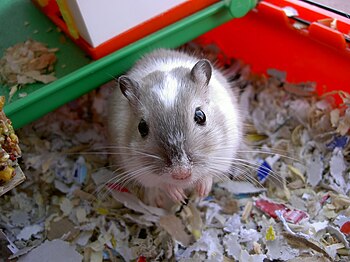 |
| Mongolian gerbil (Photo credit: Wikipedia) |
A gerbil once used to human contact, is a very sociable little creature, cute with a capital C, and enjoyable to watch as it goes about its daily activities. Before you even start thinking about food and housing, the first rule for gerbil care, and a very important one, is when purchasing a gerbil as a pet, purchase at least two. Two males or two females will be fine unless you're planning to breed them. Solitary gerbils make very unhappy pets, and often do not live long. Even if you have ample time to spend with one, they really need to be with another gerbil for companionship to be happy. So get two. If you do get a male and female, realize that gerbils breed like rabbits, only more so! Figure on 10 litters a year with 8-10 little gerbils per litter. Unless you have plenty of relatives or friends who would like a free gerbil or two (they don't cost or sell for much), best stick to a same-sex environment. Unlike some other animals, two males generally won't fight but will get on just fine.
A 10-gallon glass aquarium type enclosure is best for housing one or two gerbils. You'll need a wire mesh top, as the gerbil is a champion jumper. Wire cages are OK but should have a fine mesh so gerbil legs or tails won't get caught. Also, with a wire cage, you might find bedding scattered all over near the cage. Gerbils love to shred paper, especially cardboard. Toilet paper rolls or kitchen towel roils make fine toys, although they won't last long. A few wooden blocks or safe plastic chew toys will be a most welcome addition to their home.
Gerbils need a supply of clean water. A water bottle that hangs from the side of the cage is best. A water dish or bowl won't work at all. The same goes for a food dish. Feed your pet premixed gerbil food. Gerbils love sunflower seeds and an occasional peanut but use these as occasional treats only as they are fattening. Proper gerbil care dictates a diet that will not be too fattening. A fat gerbil will still be a cute gerbil, but not necessarily a healthy one. An occasional piece of apple or carrot to gnaw on is another good idea, but just don't leave it in the cage. Pieces of food will get buried in the bedding and tend to rot.
On the subject of bedding, give them an ample supply, as they love to dig in it, and it won't get wet so quickly. Aspen or corncob chips or shavings are best. Don't use pine or cedar shavings, as both can cause respiratory problems, especially with young gerbils. With proper housing, bedding, clean water and the right food, you're well on the way to doing an excellent job of proper gerbil care. The gerbil, as a rule, is a pretty hardy little guy and, when well cared for, will live out a typical 4-5 year life span in good health. Most respiratory ailments can be traced to improper bedding. Gerbils also will at times get fleas or mites, depending on the environment they are in. A pet store or veterinarian can recommend the proper spray to treat fleas or mites.
Wire cages or some toys can at times result in injury, a common one being a damaged or broken tail. A broken tail will often repair itself (make certain to remove the cause if you can). One rule in gerbil care never picks one up by the tail. The gerbil tail is not up to the task of supporting the gerbil's weight. Following these simple rules should give you not just many hours, but many years of enjoyment, with a very nice little pet.
|








